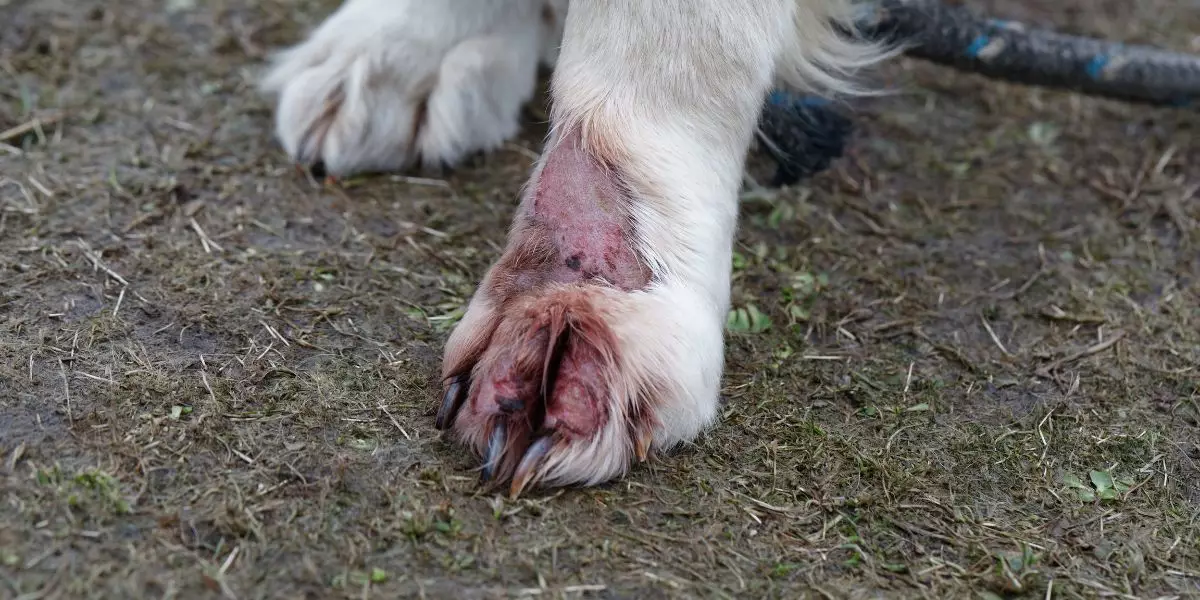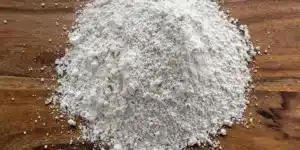Table of Contents
ToggleWhat is the dog's pyodermitis?
Pyodermitis is a common bacterial skin infection in dogs. It is characterized by skin lesions such as pustules, crusts, depilations, redness or thickening of the skin. The most common causes are Staphylococcus intermedius and Pseudomonas bacteria. But other bacteria may be involved.
Predisposing factors are: skin allergies, parasites like fleas, weakened immune system, chronic scraping lesions. The diagnosis is done by clinical examination and laboratory analysis (cytological examination, bacterial culture).
Without treatment, infection can worsen and become very painful. Veterinary monitoring is recommended. In addition, prevention requires good hygiene, pest control and allergy management.
Causes of pyodermitis in dogs
- Skin allergies (atopic dermatitis): they weaken the skin barrier and promote bacterial multiplication.
- Parasites like fleas: their bites irritate the skin and create lesions that cause cravings to scratch, which is conducive to infection.
- Immune deficiency: it can be due to disease, immunosuppressive treatment, stress, malnutrition.
- Skin trauma: wounds, burns, lacerations... that open the way to bacteria.
- Underlying skin diseases: dermatitis, folliculitis, seborrhoea...
- Poor hygiene: a dirty, wet coat, too frequent baths weaken the skin.
Treatments for canine pyodermitis
To treat pyodermitis it is important to determine the underlying cause (dermal allergies, parasites, etc.).
Natural antiseptics or antibacterials to clean and disinfect lesions. For example, spray propolis and vinegar of the 4 thieves can help fight parasites and bacteria.
Hypoallergenic and soft skin shampoos. Some may contain antiseptics to eliminate bacteria and limit the spread of the disease.
Finally, as a last resort, you have the possibility of using antibiotics. They are prescribed for 2 to 3 weeks depending on the severity of the infection. Most commonly used are amoxicillin, cephalosporins, cyclines, fluoroquinolones or cefovecin. They can be administered by general (tablet) and/or local (shampoings, lotions).
The improvement of hygiene and living conditions in general must be taken into account when treating pyodermitis. Similarly, veterinary monitoring is necessary to monitor progress and adjust treatment if necessary.
F.A.Q.
How do I recognize a pyodermitis?
Here are the main signs to recognize pyodermitis in dogs:
- Itching (pruritus) and excessive scratching of certain areas
- Small pustules containing pus
- Crusts on the coat
- Lightened peeling zones or alopecia (loss of hair)
- Skin redness and inflammation
- Thickening of the skin (relief injury)
- Squams or scales on the skin
- Small white film (furonculosis)
- Drowsing wetlands
- Yellow crusts and a smell of nausea
- Lesions often located on limbs, stomach, skin folds
- Pain or sensitivity of affected areas
It is recommended to consult a veterinarian at least in doubt for confirmation of diagnosis and appropriate treatment. Untreated pyodermitis may become widespread and may have complications.
Is pyodermitis contagious?
No, pyodermitis is not a contagious disease in itself. It is a bacterial infection of the skin, most often caused by staphylococci or streptococci already present on the dog's skin.
However, there are some nuances:
- The bacteria that cause pyodermitis are not transmitted directly from one dog to another. But some dogs are genetically predisposed.
- Dogs living together tend to share their bacterial skin flora. If one develops a pyodermitis, the other is more likely to be infected with the same bacteria.
- The scraping lesions are contagious. If a dog scratches because of a pyodermitis, it can transmit its bacteria to the wounds of another dog by contact.
- In rare cases, transmission is possible by very close contact between dogs with highly infectious and oozing pyodermitis lesions.
- The risk is higher in confined areas with many dogs (kennels, shelters).
But as a general rule, pyodermitis develops spontaneously in a predisposed dog and does not « transmit » not directly to other dogs. Hygiene measures and treatment of infected animals are sufficient to avoid contagions within the same household or confined area.
How do I disinfect my dog's skin?
Here are some tips to disinfect your dog's skin in case of pyodermitis: Use a mild antibacterial shampoo recommended by your veterinarian. Sprinkle and let act for 5 to 10 minutes before rinsing. After the bath, you can apply a local antiseptic solution in wipes or lotion, such as chlorhexidine at 0.5%, respecting the setting time. Be careful, don't make more than 2 baths by me, you would risk drying more of your animal's skin.
Then clean the lesions and crusts with an antiseptic swab. Dry the skin folds thoroughly. Be careful not to reopen the wounds or tear the craws. You can cut hair around the lesions to facilitate skin disinfection.
Be sure to maintain a good hygiene of litter, niche and bowls. Wash carpets and baskets regularly.
Disinfection must be mild so as not to irritate the skin further. It is important to always respect the doses and duration of application of the products. Do not hesitate to consult a veterinarian for advice adapted to your dog's skin problems.





